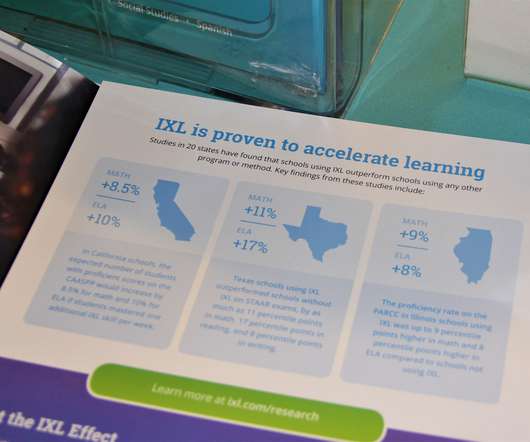3 Ways to Achieve a Successful School Improvement Initiative
EdTech Magazine
JUNE 14, 2018
After one year, students who participated in the program scored on average 97 percent higher on the STAR assessment than those who did not, according to a case study. Using that information, administrators chose to integrate DreamBox , a software solution designed to help math teachers teach and assess students.















Let's personalize your content